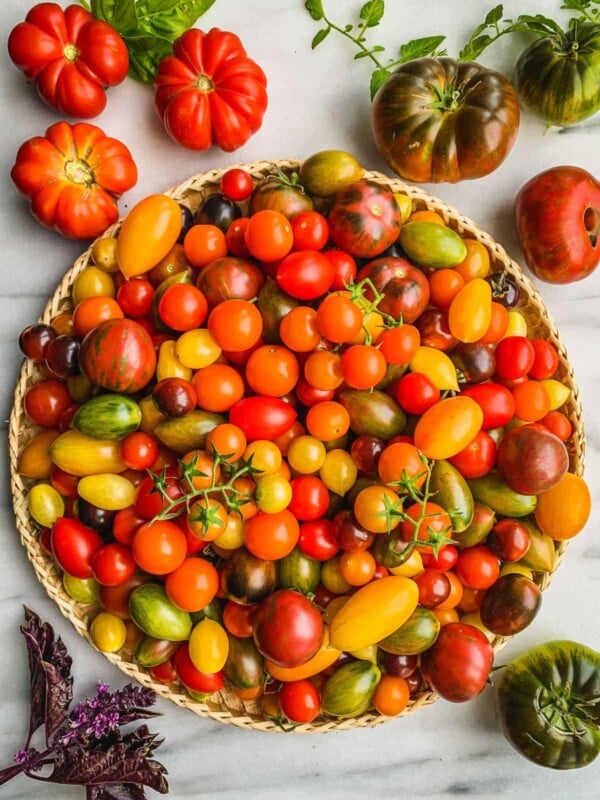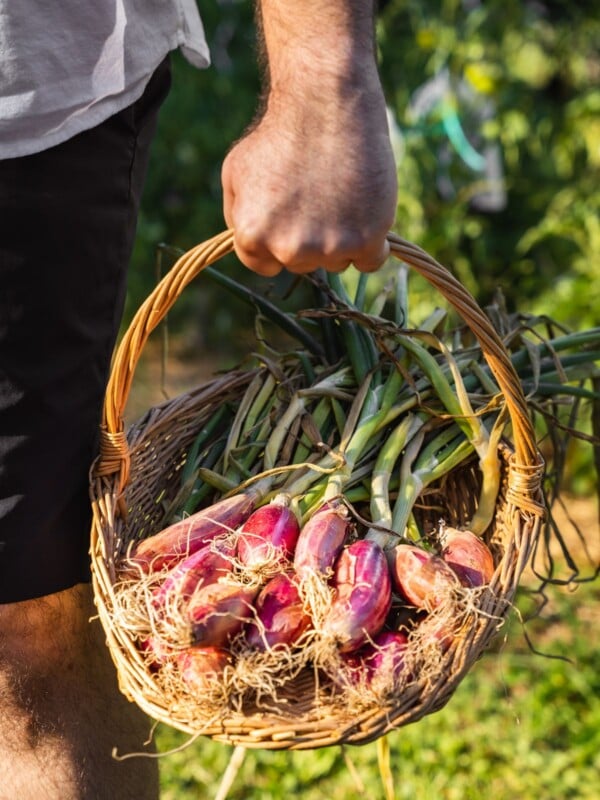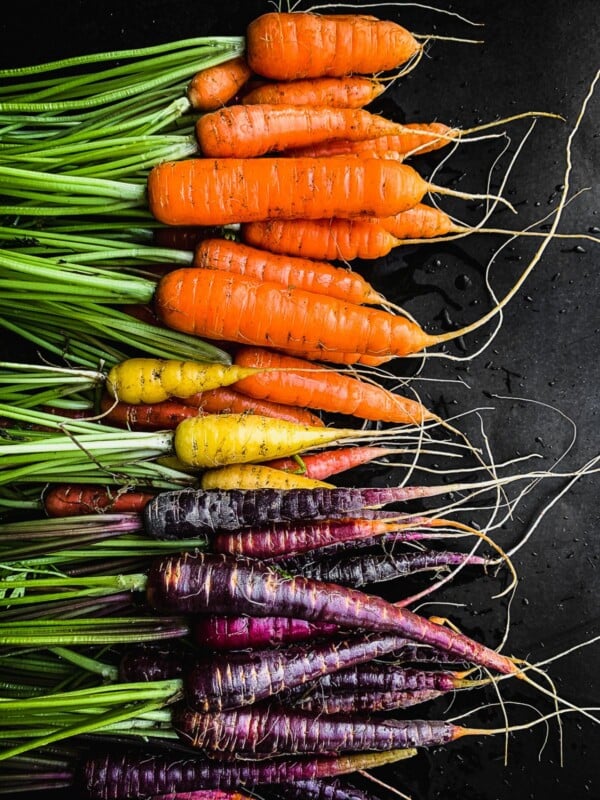Every gardener’s dilemma. Do I go on holiday and leave my garden to fend for itself? Or do I forgo that trip I’ve been planning for a while? Guess what? You can have it all! In this post, I will outline the 7 techniques and tips I use in m gardens when I go away on vacation in the summer months. There’s also a shot video at the bottom of the page!

Table of Contents
I like to focus on 3 areas when I vacation-proof the garden. Irrigation, Pest management and plant support.
Mulching
One of the ways to set up your garden for success, in general, is by using mulch. Mulching has many benefits so let’s go through them.
Moisture retention
One of the primary benefits of mulching is its ability to retain moisture in soil. When you apply a layer of mulch to the soil surface, it acts as a barrier, preventing excessive evaporation of water. This helps to keep the soil consistently moist, reducing the risk of your plants drying out during your absence.
Weed suppression
Mulch serves as a natural weed suppressant. By covering the soil with mulch, you create a physical barrier that inhibits weed growth. Weeds compete with your plants for essential nutrients and water, so by suppressing their growth, you minimize the need for manual weeding or the use of herbicides while you’re away.

Temperature regulation
Mulch acts as an insulating layer, moderating soil temperature fluctuations. It keeps the soil cooler during hot weather and helps to prevent rapid temperature changes that can stress plant roots. This thermal regulation creates a more favorable environment for your plants, supporting their growth and health in your absence.
Nutrient cycling
Organic mulches, such as wood chips, straw or even compost, gradually break down over time. As they decompose, they release essential nutrients into the soil. This natural process enriches the soil, providing a steady supply of nutrients to your plants while you’re away, promoting their overall well-being.
Erosion prevention
When you mulch your garden, you protect the soil from erosion caused by wind and rain. The mulch layer acts as a shield, preventing soil particles from being washed away or blown off. This is particularly crucial if you live in an area prone to heavy rainfall or strong winds.
Enhanced soil structure
Mulching improves soil structure and fertility over time. As the mulch breaks down, it adds organic matter to the soil, improving its composition, moisture-holding capacity, and overall fertility. This encourages beneficial microbial activity and earthworm populations, which further contribute to soil health and plant growth.
Grouping Containers
Containers dry up quickly. Any container gardening lover knows this. They typically require frequent watering and on really hot days, you might need to water twice!
Containers can also absorb the sun’s rays and warm up quickly. This warming will cause the moisture in the growing medium to evaporate. One way to help reduce this evaporation is by grouping containers together. This reduces the exposed surfaces so the sun’s rays aren’t blasting them.
I also recommend moving containers to part shade areas if possible. A few days in part-shade won’t affect your plant’s growth and will provide you with a little extra moisture retention.
Watering Deeply
Watering is part art and part science and many gardeners (both new and seasoned) get it wrong all the time. When watering, I want you to think of the root structures of your plants. Watering deeply means giving the soil or growing medium a deep soaking where the water will seep through and encourage the plant roots to grow downwards. It is far more effective to water deeply (and less frequently) than to water lightly (and more often).

Before calling that uber for the airport, give your garden a deep watering. This is especially important for containers.
Drip Irrigation
Drip irrigation is an excellent solution for saving your garden while you’re on holiday. For me, it’s a lifesaver! Here’s how it can help:
Efficient water usage
Drip irrigation delivers water directly to the roots of your plants, minimizing water wastage through evaporation or runoff. It ensures that water is targeted precisely where it’s needed, reducing overall water consumption compared to traditional watering methods like sprinklers or hand-watering. This efficiency is particularly beneficial when you’re away and unable to monitor your garden regularly.
Consistent watering
With drip irrigation, you can set up a timed watering system, ensuring that your plants receive a consistent water supply even when you’re not there. By programming the irrigation system, you can customize the frequency and duration of watering sessions based on your plants’ specific needs. This helps prevent under-watering or over-watering, maintaining optimal soil moisture levels and promoting healthy plant growth in your absence.

Disease prevention
Traditional overhead watering methods, such as sprinklers, can splash water onto the leaves and foliage, creating a conducive environment for disease development. Drip irrigation minimizes this risk by delivering water directly to the soil, avoiding contact with the leaves. By keeping the foliage dry, it reduces the likelihood of fungal diseases and other plant infections, helping to maintain the health of your garden while you’re away.
Customizable and adaptable
Drip irrigation systems offer a high level of customization to suit your garden’s specific needs. You can adjust the water flow rate, install different types of emitters for various plant types, and even incorporate automated controllers for precise scheduling. This adaptability allows you to tailor the irrigation system to your garden’s requirements, ensuring optimal water delivery and plant health during your absence.
Time-saving
Drip irrigation saves you time and effort by automating the watering process. Once the system is set up and programmed, it operates independently, eliminating the need for manual watering. This is especially convenient when you’re on holiday and unable to tend to your garden regularly. You can enjoy your time away knowing that your plants are being watered consistently and efficiently.
Fertilizing
If you’re going to be away from your garden for an extended period of time (over 10 days), I highly recommend that you fertilize your container plants before leaving. Nutrients in containers will deplete rather quickly and if they were already low before your holiday, chances are your crops will suffer some nutrient deficiencies.

To give your container plants the best chance to survive and thrive while you’re away, fertilize them with an organic fertilizer. In-ground or raised bed plants will be fine as they have access to a much larger growing medium area.
Using Row Cover
A thriving garden can get completely overrun and decimated by pests in just a few days. Most organic gardeners are attentive and will check plants regularly for pest damage, eggs, and larvae. When you’re on holiday, there’s no one there to perform this important task.
Using row cover is the best way to reduce the chance of pest damage on sensitive crops. In many parts of the world, Brassicas (cabbage, kale, broccoli, cauliflower, etc.) are under relentless attack by cabbage butterflies all summer long. The best way to guarantee perfect cabbage heads and kale that doesn’t look like Swiss cheese is to cover your brassica crops with insect netting or a light row cover.
I also encourage you to cover beets, Swiss chard and spinach to prevent leaf miner damage.

Important note: Do not cover crops that need to be pollinated by insects to set fruit. Most summer crops like tomatoes, peppers, beans, and squash should not be covered.
Staking and Trellising
We often forget how quickly plants can grow in a week or two. If you don’t properly trellis or stake your plants before leaving, you could end up with some overgrown branches that could snap. If plant vines grow in problematic directions, they will become difficult to manage when you return and you could end up snapping a few stems. We don’t want that!
Ensure your plants are well supported and growing in the direction you want them to before you leave.
Video
For more, follow along on Instagram, Facebook, and Pinterest, visit the Urban Farm Shop, or subscribe for new posts via email.












